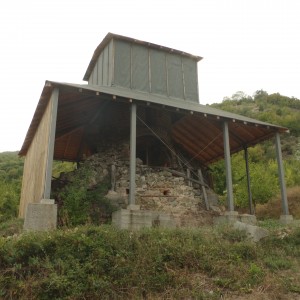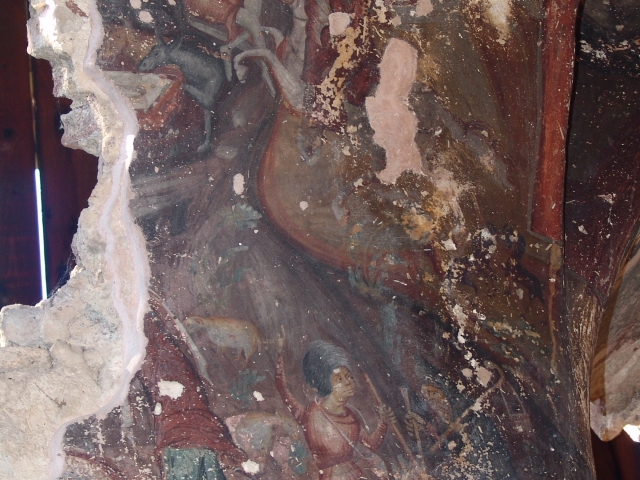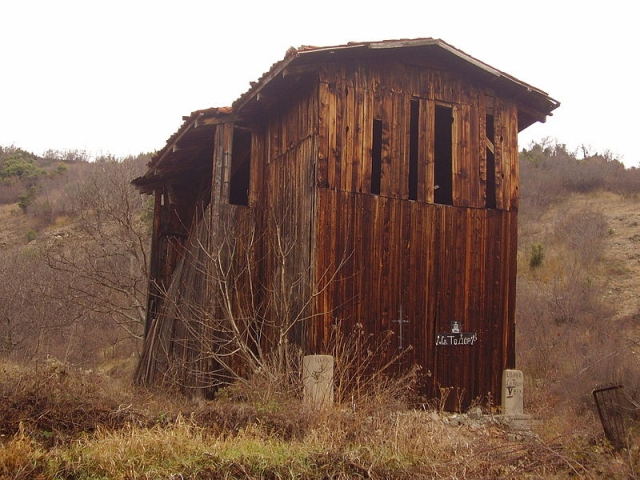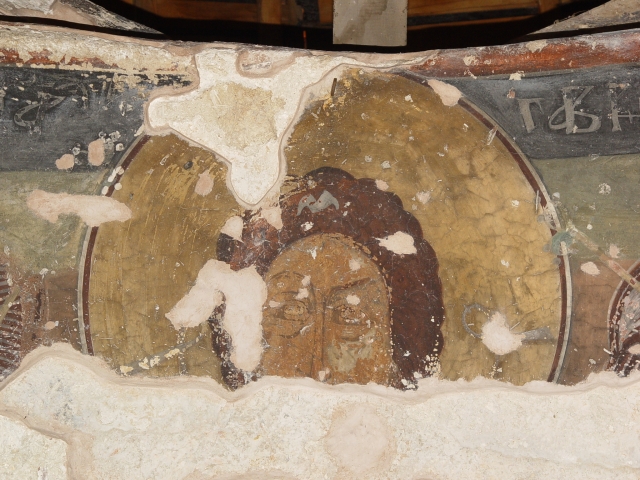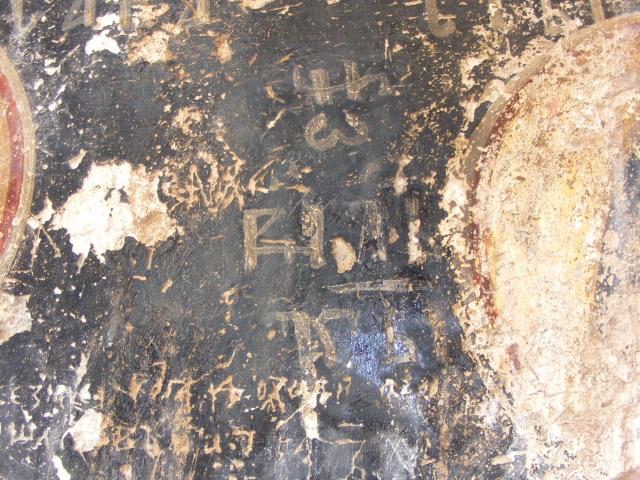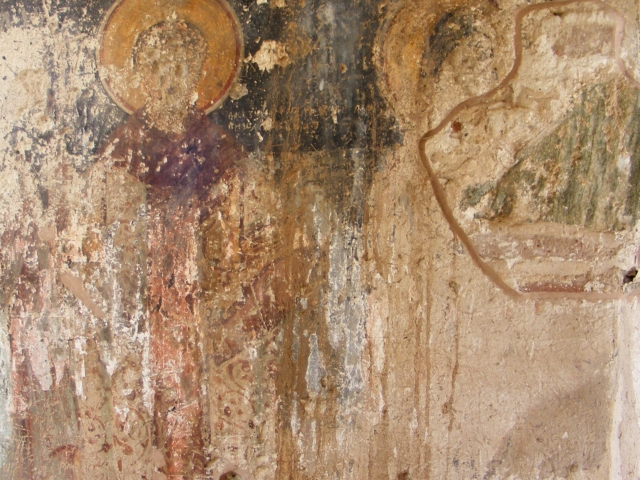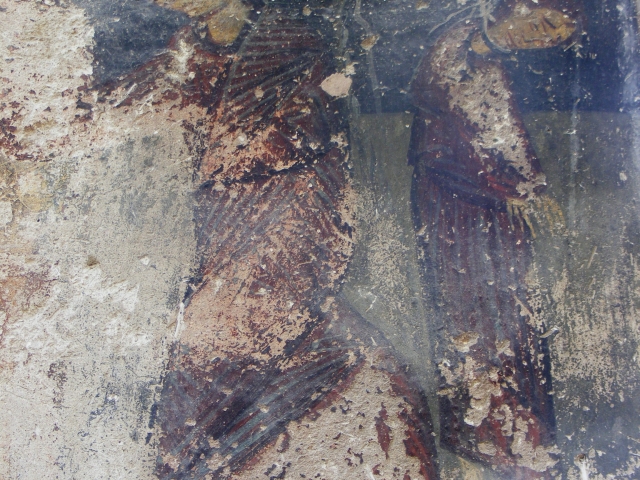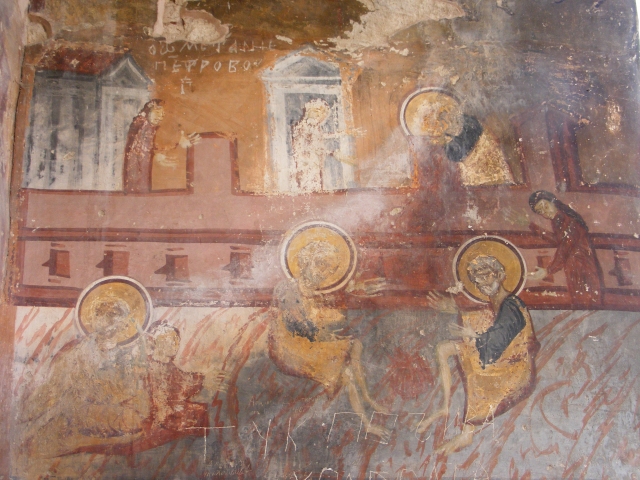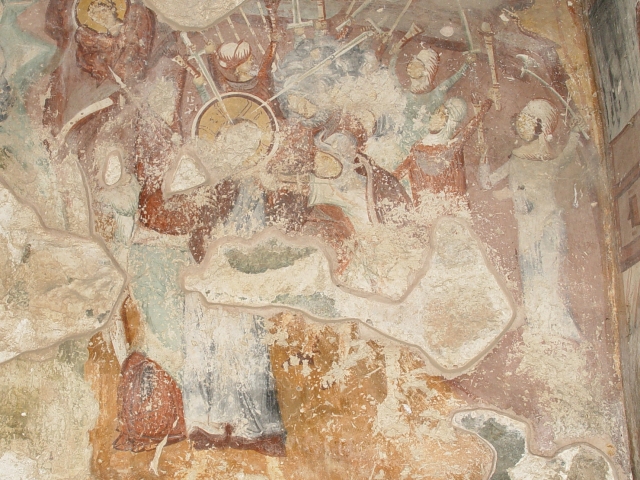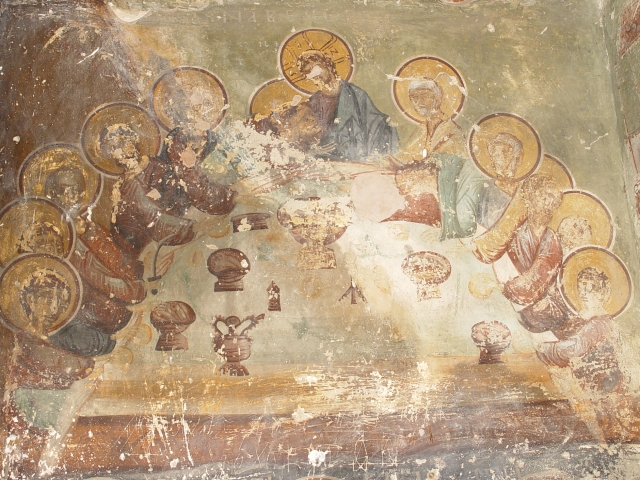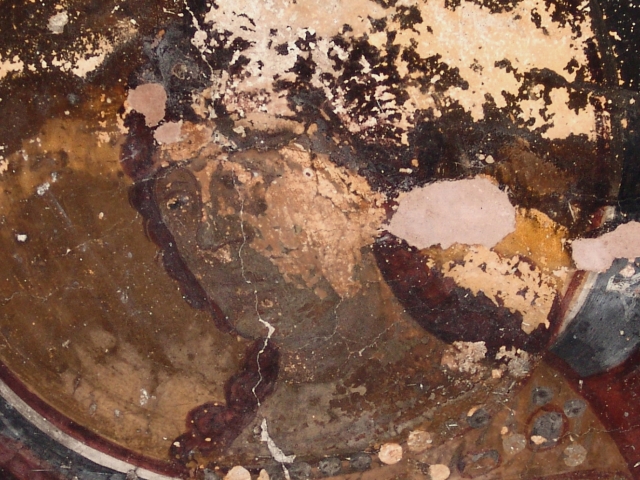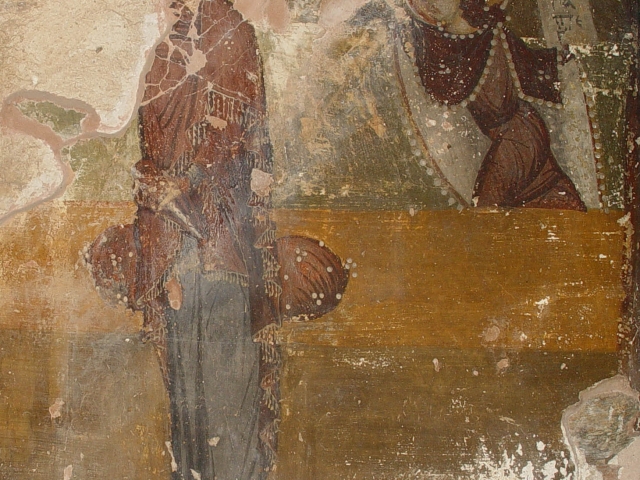
State of the church of St. Theodore near Boboshevo in 2011
The church is situated on the right bank of Struma River, next to the main road to Kyustendil, at about 2 km to the north of the town of Boboshevo.
There are no surviving documents about the church’s history.
Architecture
The building belongs to the free cross type where the arms of the cross are equal and short. It is high-domed with a cylindrical
barbican. There are different opinions on the dating of the architecture: second half of the 10th, 11th, 12th or 13-14th cc.
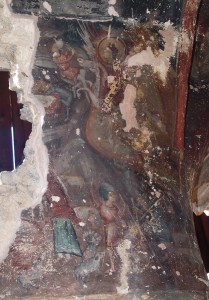
Nativity, the church of St. Theodore near Boboshevo, fragment
Just like the dating of the architecture, the dating of the frescoes is also debatable. Most of the researchers agree only on the existence of two layers which are hard to distinguish. According to D. Panayotova, the monument was painted in two stages and features some later retouches dating from the Ottoman period. The earlier layer, which she believes dates from the 11th c., is covered by a second layer, dated by the author in the 14th c. P. Lecaque thinks that the murals have been painted in the 14th c. and restored in the 17th c. and that in their restoration the painters have followed the earlier models. In the more recent research the early frescoes are dated from the 14th c. and the later – from the very beginning of the 16th c. based on their extreme similarity to the frescoes of St. Nicholas Magaliou Church in Kastoria (ca. 1505). The drum of the dome is occupied by the fragments of the early painting layer. In the early 16th c., in the pendatives have been presented Christ Angel and archangels Michael, Gabriel, Raphael and Uriel (the last two in the same field). The position of the scenes and images is consistent with the existing architecture, and therefore the Christological cycle is divided in two registers, unfolding clockwise. The Great Feasts are painted in the highest zone: on the domes and the tympana of the cross arms, starting with Annunciation with prophets David and Solomon in the altar. The second register presents in detail scenes from the Passion of Christ.
Special interest presents the iconographic specifics of the Nativity, St. Peter’s Denial and Repentance, Judas’ Repentance and Suicide. The lowest zone is greatly damaged. In the apse are visible Communion of the Apostles and Adoration of the Sacrifice. Deeisis with Christ King of Kings was painted on the north wall; on the other walls of the church in this register were presented saints bishops, healers, hermits, monks and women saints. Special attention is to be given to the presence of the images of St. John of Rila and St. Sava of Serbia in the mural painting program.
Greek and Cyrillic.
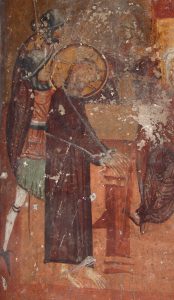
Christ before Pilate, the church of St. Theodore near Boboshevo (detail)
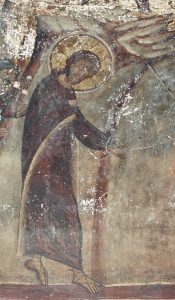
The Road to Calvary, the church of St. Nicholas Magaliou, Kastoria (detail)
The frescoes in St. Theodor Church near Boboshevo belong to the artistic heritage of the Kastoria masters of the late 15th – early 16th cc. Among its typical features are the Deeisis of Christ King of Kings and the warrior saints, the mirror composition of St. Theodore Tyron and St. Theodore Stratelates, the attention to detail, the emotional representation of the figures’ gestures, the realistic elements, the attempt at using perspective, etc. The effect of aristocratism and monumentality distinctive of the painting of the masters of the last quarter of the 15th c. is not found in St. Theodore frescoes. After a brief decay in the early 16th c., the activity of the icon-painters in these ateliers finally abated in the 1530s. In their iconography, the frescoes of St. Theodore Church and their closest parallel in St. Nicholas Magaliou Church in Kastoria (ca. 1505) are representative of the later works of the abovementioned artistic circle, but at the same time they differ from the rest of the monuments in style and in some paleographic features.
Tsveta Kuneva
Миков, В. Църквата „Св. Тодор” при с. Бобошево, Дупнишко. – Известия на българския археологически институт, V, 1929, 333-334.
Василиев, А. Проучвания на изобразителните изкуства из някои селища по долината на Струма. –Известия на института за изобразителни изкуства, VII, 1964, 155.
Панайотова, Д. Църквата „Св. Теодор” при Бобошево. – Известия на института за изобразителни изкуства, VІІ (1964),101-141.
Марди-Бабикова, В. Научно мотивирано предложение за обявяване на църквата „Св. Тодор” при с. Бобошево, Кюстендилско за паметник на културата. Национален институт за паметниците на културата. С., 1969.
Wessel, K. Zu den Wandmalereien von Sveti Todor bei Bobosevo. – In: Ethnogenese und Staatsbildung in Sudosteneuropa. Göttingen, 1974, 9-17.
Lecaque, P. Nouvelles données sur l’église Saint Théodore près de Bobosevo (Bulgarie). – Byzantion, LVI, 1986, 171-179.
Piquet-Panayotova, D. Resherches sur la peinture en Bulgarie du bas Moyen âge. Paris, 1987, 26-33, fig. 1-26.
Мавродинова, Л. За по-късното датиране на някои късносредновековни стенописи. – В: Българският шестнадесети век. С., 1996, 601-602.
Суботић, Г. Костурска сликарска школа. Наслеђе и образовање домаћих радионица. – Глас САНУ, СССLXXXIV, Одељење историјских наука, 10, 1998, 125-126.
Lecaque, P. The Mural Paintings of the Saint Theodore Church in Boboshevo, Bulgaria, 17th century. Veliko Tarnovo, 2006.

